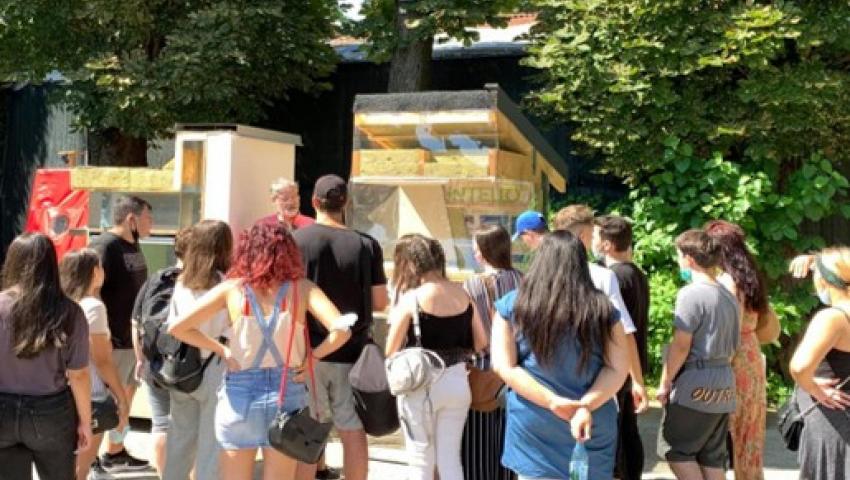BGN 400 million for energy efficiency in municipal buildings are distributed again as free support
Non-governmental organizations oppose the continued practice of grant funding

Photo: EnEffect/ Grant funding is not a sustainable mechanism, unlike the so-called ESCO contracts, loans that are repaid through realized savings
Raya Lecheva
The government released for public discussion the energy efficiency measure for municipal and state buildings for 400 million BGN. Initially, the discussion was announced with a deadline of one week in mid-August, but after the reaction of municipalities and businesses, the deadline was extended until September 26, 3eNews learned.
The program is based on the National Plan for Recovery and Sustainability, and the goal is to achieve a sustainable mechanism for financing municipal projects - municipal administration buildings, sports halls, museums, concert halls, community centers, fire stations, police departments and others. And grant funding is not a sustainable mechanism, unlike the so-called ESCO contracts - loans that are repaid through realized savings, as was originally foreseen in the plan, commented the executive director of the Center for Energy Efficiency EnEffect Dragomir Tsanev. Thus, we totally contradict the set goal of creating a sustainable model for financing municipal renovation projects, if you want to create sustainability, it cannot be a 100% grant, because you cannot provide financing for all buildings, he added. It is most sustainable for local authorities to borrow and repay from savings, these are buildings that have activity, have energy costs and can realize savings. At the moment, everyone is in the attitude of looking for any possible measures immediately to save energy costs, and now it will turn out that good projects will wait for a grant, and it will not reach everyone, Tsanev said.
Let's recall that this is what happened with the universities that started to sign contracts with financial institutions such as FLAG, but a rehabilitation program was launched and they gave up, starting to rely only on the grant, which, however, is not enough for everyone. Thus, some remain at a disadvantage compared to others.
The good news is that there is a requirement to achieve Class A, with priority given to a near-zero energy building, which is technically possible and great as an idea, but raises questions about the intended funding.
If we calculate how much money there is under the program and how many square meters of renovated area they expect as an indicator, all costs come out to BGN 286.24/m2 with VAT - projects, surveys, construction activities, re-surveys, which at current construction prices will be exceptional difficult and even impossible to achieve the requirements for almost zero-energy buildings. This means that one of the indicators will not be achieved - either the set goals for the area, respectively the number of renovated buildings, or those for the quality of the projects.
Currently, the goal is to renovate 600 public buildings, and Sofia alone has over 1,000, although this number also includes buildings from the educational, social and health infrastructure, which are not eligible under this project. There are 265 municipalities in Bulgaria, and each has administrative building, and in big cities there are many more. The money cannot be enough for everyone, and there is another serious problem - projects in similar type of buildings in medium-sized cities are usually much more expensive than the announced threshold of BGN 2,500,000 for administrative buildings and BGN 1,000,000 for buildings in the field of culture and sports. At the same time, there are no specified opportunities to implement complementary financing schemes, and so many municipalities will not be able to afford to participate in the program precisely with the buildings that are most in need of renovation.
There are other technical quirks. Immediately after the implementation of the measures by the builder, the energy auditor is requested to check whether they have been implemented properly and to verify the savings. But the auditor's job is not that, he considers how the building has behaved after at least one heating season and whether it meets the objectives set, and this is recorded in the Survey Ordinance. Re-survey is done at least after one heating season. Here they want the auditor to accept the results as they are according to the project and to report to the EC in this way. Thus we again avoid the actual process of monitoring; on the other hand, where RES installations can be installed, auditors are not specified as part of the process, and their assessment is particularly important. There, they ask for assessments from a designer with legal capacity and registration in KIIP, and in fact, the auditors are most likely to make an energy balance and assess exactly which RES system is most suitable for the building. RES installations must be for own use only, which, in the mode of operation of these buildings, means that a large part of the energy produced (for example during weekends) will not be able to be used.
In the program for industrial buildings, the maximum allowable grant is 45%. This looks better at first glance, but here things are more complicated, because each industrial building has specifics, different energy needs, different payback periods. The grant must be determined against financial parameters. If the building needs to be renovated, but the payback period is 20 years, then a larger grant should be given, but if it knocks out the renovation in two years, then a smaller percentage grant should be given. This program again shows the same problems as the one for public buildings, although there was sufficient time for these guidelines to be consulted in advance with the professional community before proceeding to public consultation, but this never happened, even in the Commission on energy efficiency and energy poverty to the Advisory Council on the European Green Deal.
